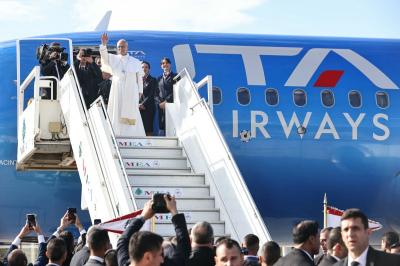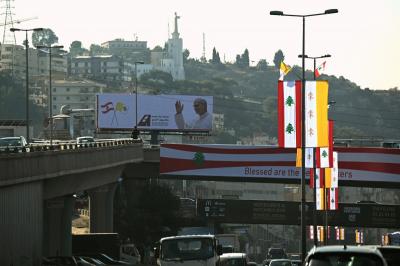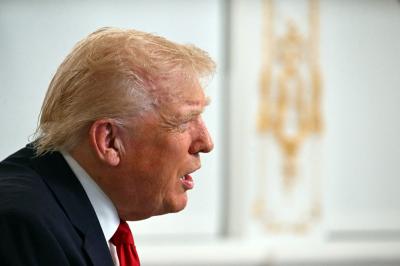A single thread weaves through all the pressing issues in the region — from U.S.-Iran negotiations to the situations in Iraq, Syria, Lebanon, Gaza, and Yemen. Predictions about outcomes vary wildly, fueled by Washington’s urgency to resolve multiple crises at once, and Israel’s attempts to leverage the shifting dynamics to advance its vision of a "new Middle East," as it publicly declares.
On the U.S.-Iranian front, American officials remain optimistic, convinced that Tehran seeks a deal to salvage its battered economy. Iran’s perceived “flexibility” — either to accept U.S. proposals or at least de-escalate temporarily to regain strength after a series of painful setbacks to itself and the “Axis of Resistance” it leads — reinforces this belief.
However, Iranian officials themselves harbor little hope for a breakthrough, refusing Washington’s demands, particularly to halt uranium enrichment and to procure nuclear fuel for peaceful reactors exclusively from friendly foreign suppliers. Tehran views such demands as an existential threat to its nuclear independence, recalling a bitter experience when its ally, Russia once suspended fuel supplies for a Tehran medical reactor — a move that endangered the lives of 1,500 cancer patients. Iranian nuclear scientist Majid Shahriari responded by enriching uranium beyond the necessary 20% threshold, saving the patients, only to be assassinated shortly thereafter in the heart of Tehran.
Iran also insists that negotiations remain strictly confined to the nuclear file and sanctions related to it, categorically rejecting Washington’s demands to dismantle its ballistic missile program and cut support for its regional proxies targeting Israel. Tehran sees these demands as a bid to dismantle the regional influence it painstakingly built since its 1979 Islamic Revolution.
The U.S., meanwhile, argues that Iranian concessions would be crucial to convincing Israel to stand down from military action against Iran, given that both Iran’s missile arsenal and its regional allies pose a constant threat. Without such reassurances, Washington believes Tel Aviv could launch a military strike at any moment, possibly dragging the U.S. into a broader confrontation.
Tehran’s rigid stance — focusing solely on the nuclear issue — may have backed it into a corner. Observers suggest Iran may soon have no choice but to sign a deal, as it can no longer endure additional sanctions, especially amid deteriorating fortunes for its allies in Iraq, the growing coordination between Syrian government forces and the U.S.-backed Syrian Democratic Forces (SDF), and the Syrian army’s advance toward the Tishrin Dam on the Euphrates River. Some even view the recent explosion at Iran’s Rajaei Port in Bandar Abbas as a warning shot to Iranian leadership to reconsider its options, particularly if negotiations collapse without an agreement.
U.S. officials believe Iran is using its missile program and regional proxies as bargaining chips to extract concessions, particularly freedom of movement in the region. However, Washington assesses that much of Iran’s regional leverage has already been eroded, especially following the fall of the previous Syrian regime.
Meanwhile, ties between the U.S. and Syria’s new leadership continue to deepen, with Washington expressing conditional readiness to ease sanctions in return for Damascus joining the Abraham Accords and normalizing relations with Israel. Indicatively, Syrian Foreign Minister Assad al-Shibani recently visited New York, where the new Syrian flag was raised at the United Nations — a highly symbolic gesture. Shibani is also expected to travel to Saudi Arabia during President Trump’s visit early next month.
The Syrian file is set to become a central focus for U.S. Middle East envoy Steve Whitkoff, regardless of the outcome of U.S.-Iran talks. Whitkoff may even visit Damascus, following the momentum created by a recent congressional delegation’s trip to Syria — a visit that laid the groundwork for a second, more politically aligned delegation now en route to Lebanon, a country that recently hosted a delegation with ties to the Biden-era political establishment.
This raises a critical question: If the Syrian file is resolved, what is the fate of the Lebanese file?
Historically, Lebanon’s fate has been tightly bound to Syria’s. Whatever the outcome in Damascus, Beirut is likely to follow the same trajectory.
Amid these shifts, renewed discussions about disarming Hezbollah — framed under the slogan “arms under state control” — are surfacing, expanding beyond the contours of “national defense strategies.” The U.S., backed by Israel, is pushing to dismantle Hezbollah’s heavy weapons arsenal, though it appears less concerned about its light and medium arms. Washington hopes that Iranian flexibility could pave the way for Hezbollah to show similar pragmatism.
Yet, according to Lebanese Parliament Speaker Nabih Berri, Hezbollah will not engage in any discussion over disarmament with President Joseph Aoun or anyone else until Israel withdraws from occupied Lebanese territories and fully complies with the 2006 ceasefire and UN Resolution 1701 — commitments Israel has consistently failed to honor, particularly since November 27, 2024.
Hezbollah, for its part, sees little chance that Israel will halt its attacks. Instead, the group believes Israel is preparing a new “bank of targets” that will now include Hezbollah’s political leadership, not just its military commanders, whom Israel believes it has largely neutralized. Israel also aims to finish destroying Hezbollah’s remaining military bases and heavy weapon stockpiles, seen as lingering threats to its security.
Hezbollah appears resigned to this trajectory, preparing for confrontation and other scenarios. Many believe that the region is only a few months away from a new flood, one that could sweep Lebanon and the broader Middle East into a new and unpredictable reality.
Please post your comments on:
[email protected]
 Politics
Politics














